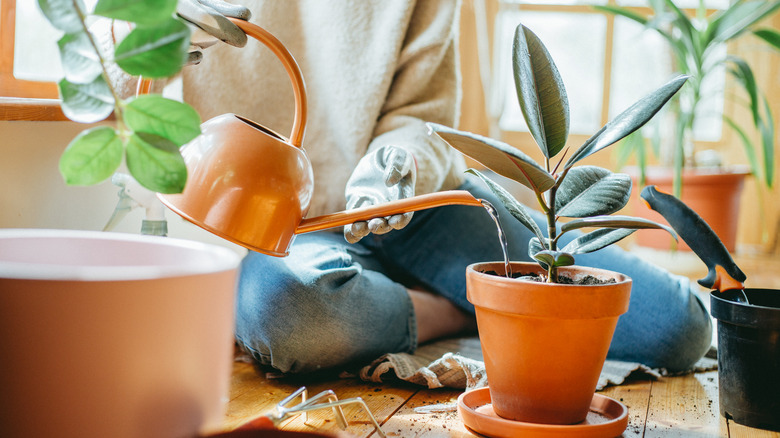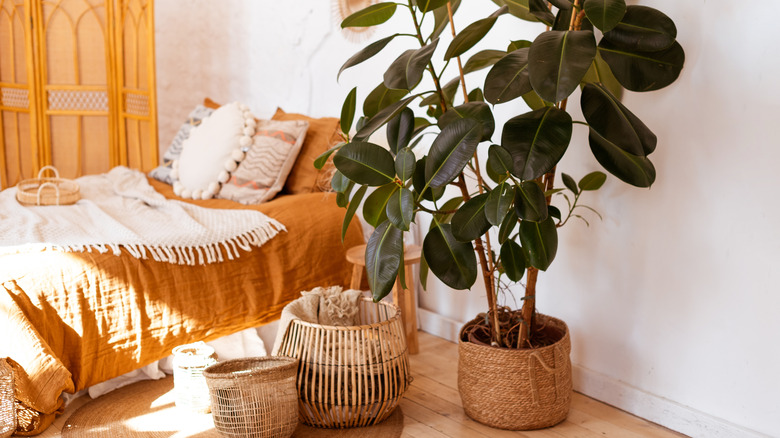The Low-Maintenance Tree You'll Want In Your Home For All Of Its Benefits
In recent years, the Ficus elastica or India rubber plant (AKA rubber fig, rubber bush, rubber tree, etc.) has experienced a surge in popularity as a favored houseplant among indoor gardeners and plant enthusiasts. Its striking foliage, ease of care, and transpiration rate make it a desirable addition to any plant collection. The enduring popularity of the rubber tree can be attributed to several factors. Firstly, its glossy, leathery leaves and upright growth habit lend a touch of tropical elegance to indoor spaces, adding visual interest and greenery to any room. Additionally, rubber trees offer an environmental benefit that makes them stand out among other houseplants.
Rubber trees have a high transpiration rate, which helps increase humidity levels in a space. This can be particularly beneficial during the dry winter months or in areas with low humidity, helping to prevent issues such as dry skin, respiratory discomfort, and static electricity. Rubber trees are also known for their resilience, being generally disease and pest-resistant, and low-maintenance.
Caring for your rubber tree
Successfully growing a rubber tree requires minimal effort, so it's an ideal choice for busy people or less experienced gardeners. That being said, rubber trees need proper care to grow and thrive. Use a well-draining potting mix rich in organic matter, such as peat moss or compost, for planting your rubber tree. Avoid heavy soils that retain excess moisture, as they can lead to root rot. Allow the top inch of the soil to dry out between waterings, then water your rubber tree thoroughly. During winter, reduce the watering frequency to prevent waterlogged soil.
Rubber trees require bright, indirect light but can tolerate moderate levels of shade. Place your plant near a window where it can receive ample sunlight without being exposed directly, as too much sun can scorch its leaves. Rubber plants prefer temperatures between 75 and 80 degrees Fahrenheit and moderate to high humidity. Mist the foliage occasionally or place a humidity tray filled with water and pebbles beneath the pot to raise humidity levels. Feed your rubber tree with a slow-release fertilizer every four to six weeks during the growing season (spring and summer). Remove any yellowing or damaged leaves regularly to encourage healthy growth. You can also prune your rubber tree to control its size and shape. However, note that rubber trees are toxic to people and pets, so make sure to keep them in areas that aren't accessible to curious kids and pets.

